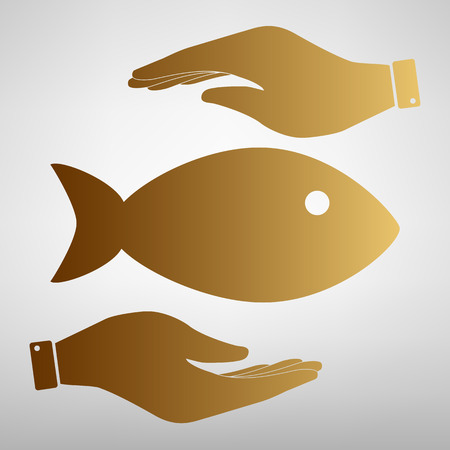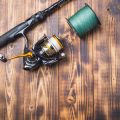Introduction: Why Fishing Limits Matter
In the world of American angling, fishing limits aren’t just another set of rules to follow—they’re the backbone of a thriving marine ecosystem and the guarantee that our grandkids will have a shot at landing trophy catches. Across the U.S., from Maine’s cold Atlantic waters to the Gulf of Mexico’s sun-drenched flats and out to the rugged Pacific coast, fishing limits play a crucial role in balancing our love for the sport with the health of fish populations and habitats. These science-backed regulations are designed not only to prevent overfishing but also to help maintain biodiversity, sustain local economies, and ensure that both weekend warriors and commercial fleets can keep casting lines for years to come. By unpacking how fishing limits protect American fisheries, we see how they serve as practical tools for keeping ecosystems resilient and productive—making every trip to the water not just about the catch, but about stewardship and respect for nature’s boundaries.
2. Science in the Water: How Data Drives Decisions
If you’ve ever wondered why there’s a limit to how many fish you can catch—or why certain sizes must go back into the water—it all comes down to hard science and data-driven decisions. U.S. fisheries management isn’t just guesswork or tradition; it’s a high-stakes blend of biology, technology, and relentless fieldwork. Here’s what really happens behind the scenes before those rules hit your tackle box.
Fishery Research: Boots on the Ground, Nets in the Water
Every season, marine biologists and fishery scientists roll up their sleeves and hit America’s lakes, rivers, and coastal waters. They use a variety of methods—from underwater drones to old-school net surveys—to estimate fish populations, track migration patterns, and study spawning cycles. This real-time intel is crucial for understanding which species are thriving and which ones are struggling.
Tracking Methods: From Tagging to Tech
The backbone of smart fishing limits is solid tracking. Here’s how experts get their numbers:
| Method | Description | Why It Matters |
|---|---|---|
| Tagging & Recapture | Attaching small tags to fish to track movement and growth when recaptured. | Reveals migration routes and survival rates. |
| Electronic Monitoring | Using sonar, GPS trackers, and underwater cameras. | Provides accurate population counts with minimal disturbance. |
| Angler Surveys | Collecting catch data from recreational fishermen. | Adds grassroots info on local stocks and trends. |
| Spawning Counts | Monitoring egg production during breeding seasons. | Predicts future population strength. |
Biological Factors: The Numbers Game of Sustainability
The science doesn’t stop at counting heads. Managers look at biological factors like growth rates, age structure, natural mortality, and recruitment (the number of young that survive each year). These details help set quotas—how many fish can be harvested without threatening the future of the species—and size restrictions that protect juveniles before they have a chance to spawn.
From Data to Decisions: Why It Matters for Anglers
This heavy-duty research translates directly into the rules you see at boat ramps and on license applications. When you respect bag limits or toss back undersized fish, you’re not just following orders—you’re playing a part in one of America’s most advanced conservation efforts. That’s science in action: keeping our fisheries alive for today’s hardcore anglers and tomorrow’s rookies alike.

3. Fish Populations and Balancing the Ecosystem
When we talk about fishing limits, we’re not just looking out for a single species—we’re safeguarding the whole underwater community. Every fish you pull from the water is part of a bigger story: predator and prey, algae grazers and ambush hunters, all tangled up in a food web that’s more complex than any lure collection. By regulating harvests through science-backed catch limits, we make sure we’re not stripping out a critical link in this chain. Overfishing one species can cause ripple effects, leading to population booms or crashes in others, which throws off the natural balance and can devastate habitats like reefs and wetlands.
Think about it: If too many baitfish are hauled out because there aren’t enough regulations, game fish lose their food source—and your trophy catches become rare. On the flip side, if predators like bass or pike are overharvested, smaller fish populations might explode, clouding waters and choking out plant life. Sustainable practices ensure that each species has a shot at thriving, keeping those waterways productive for generations of anglers. It’s about respecting the science behind nature’s design so every cast counts—not just today, but for years down the line.
4. Enforcement and Angler Responsibility
Fishing limits aren’t just numbers on a sign—they’re the real deal when it comes to keeping America’s fisheries healthy for the long haul. But none of it works without solid enforcement and anglers willing to play by the rules. Here’s how state agencies, local wardens, and everyday folks like you and me keep these sustainable practices alive out on the water.
The Enforcement Backbone: Agencies and Wardens
Every state with a fishing scene has its own agency—think Texas Parks & Wildlife or California Department of Fish & Wildlife—that sets regulations, monitors fish populations, and hands out licenses. These organizations employ wardens who patrol lakes, rivers, and coastlines, making sure everyone sticks to bag limits, size restrictions, and seasonal closures. Wardens don’t just write tickets; they educate anglers, investigate poaching cases, and sometimes even rescue wildlife.
Enforcement Roles at a Glance
| Role | Main Responsibilities |
|---|---|
| State Agencies | Set fishing limits, issue licenses, conduct population studies |
| Local Wardens | Patrol waters, enforce regulations, educate the public |
| Federal Officers (where applicable) | Protect endangered species, manage interstate waters |
The Anglers Role: Playing It Straight
No matter how many officers are on the water, it comes down to personal responsibility. Hardcore anglers know that following the rules isn’t just about dodging a fine—it’s about protecting the future of the sport. That means knowing your local regs before you hit the ramp, measuring your catch, and reporting anything sketchy you see out there.
Ways Anglers Support Sustainable Fishing:
- Stay Informed: Check updated regulations before every trip (they change more often than you’d think).
- Report Violations: Many states have tip hotlines for reporting illegal activity—use them if you see poaching or over-limits.
- Lead by Example: Show new anglers how it’s done right—ethics are contagious on a boat.
- Participate in Conservation: Join habitat clean-ups or data collection programs when you can.
This teamwork between agencies and everyday fishermen is what keeps our fisheries world-class. Without buy-in from both sides, sustainable fishing is just talk—and that’s not what America’s fishing culture is all about.
5. Sustainable Fishing in Action: Case Studies from U.S. Waters
Nothing beats seeing sustainable fishing in action, especially when it’s happening right here on American waters. From the salty stretches of the Gulf Coast to the sprawling expanse of the Great Lakes, real-world examples show how science-backed fishing limits lead to better catches—and a healthier future for all anglers. Take the red snapper fishery in the Gulf of Mexico. A few decades ago, overfishing nearly wiped out this prized species. But thanks to strict quotas and mandatory reporting systems, stocks have rebounded dramatically. Today, both commercial and recreational fishermen pull in solid hauls without risking tomorrow’s bite. On the other side of the country, the West Coast groundfish fishery was once listed as a federal disaster. Through science-driven management—like catch shares and seasonal closures—many species have bounced back faster than anyone thought possible.
Let’s not overlook freshwater icons like Lake Erie walleye. For years, heavy harvests threatened this legendary fishery. State and tribal agencies teamed up, using data collection and adaptive limits to bring balance back to the lake. Now, anglers enjoy record-setting seasons while preserving breeding populations for generations ahead.
These success stories aren’t just luck—they’re proof that sticking to responsible limits pays off big time. It’s about more than following rules; it’s about passing down a tradition that works, ensuring our favorite spots stay productive for years to come. Whether you’re trolling for stripers or casting for bass, remember: every ethical choice on the water is an investment in the next cast.
6. The Future of Sustainable Angling
Looking ahead, the future of sustainable angling is set to be shaped by a combination of innovative technology, grassroots community efforts, and the leadership of dedicated anglers. As science continues to reveal the delicate balance required for healthy fisheries, new tools are emerging—like advanced fish finders that minimize bycatch, catch-and-release best practices based on real-time data, and apps that log catches for citizen science initiatives. But beyond tech, it’s the local fishing clubs, conservation groups, and weekend warriors who are driving change where it matters most. These communities are organizing clean-up events, advocating for smart regulations at town halls, and mentoring newcomers in ethical angling. For American anglers who want to lead the charge, the path forward means staying informed about evolving regulations, participating in habitat restoration projects, and championing education both on and off the water. By combining hard-hitting science with boots-on-the-dock action, today’s fishing community can ensure that future generations inherit thriving waters teeming with life—and the freedom to fish them responsibly.

